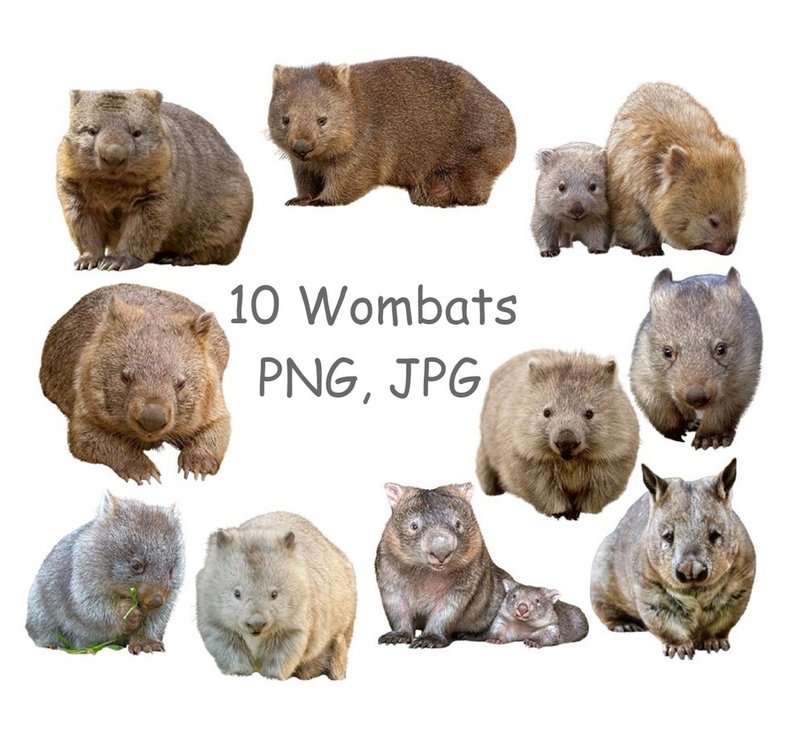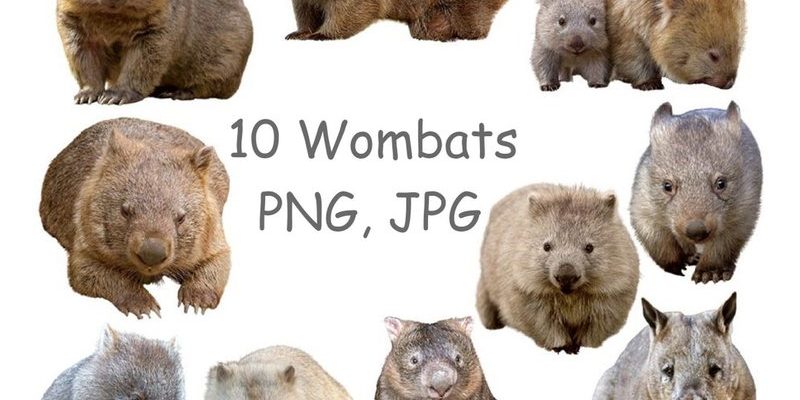
In this article, we’ll explore **10 animals that are similar to wombats**. We’ll dive into what makes these animals alike and how you can spot the differences. Get comfy, grab that coffee, and let’s jump into the world of wombat look-alikes!
1. Quokka
When you first lay eyes on a quokka, you might mistake it for a small wombat. These adorable marsupials, often called “the world’s happiest animal,” have a round face and a friendly demeanor that can melt your heart. Quokkas are native to Australia, mainly found on small islands off the coast.
So, how do you tell them apart? Well, quokkas are generally smaller than wombats and have a more elongated body. Their fur is also lighter, often taking on shades of brown or gray. While both animals enjoy a herbivorous diet, quokkas tend to munch on softer plants and grasses, while wombats have a fondness for tougher vegetation.
2. Tasmanian Devil
If you’re looking at a Tasmanian devil, you might see some similar features to a wombat—especially the stout body and strong legs. However, these little creatures are much more distinctive. Tasmanian devils are known for their dark fur, powerful jaws, and iconic screeching sounds.
What sets them apart from wombats? For starters, Tasmanian devils are nocturnal and are often seen scuttling around at night. Their diets are also different; while wombats are mostly grazers, Tasmanian devils are scavengers and will feast on carrion. So, while they share some physical traits, their behaviors and lifestyles can help you differentiate them.
3. Bandicoot
Bandicoots are another interesting animal that can resemble wombats at a glance. Though they’re much smaller, bandicoots have that distinctive stocky build. These little marsupials are also native to Australia and New Guinea, making them somewhat of a local celebrity.
The easiest way to tell them apart? Bandicoots have long, pointed snouts and large ears, which sets them apart from the wombat’s rounded face. Additionally, bandicoots prefer a more insectivorous diet, often hunting for bugs, while wombats stick to their vegetation.
4. Capybara
Admittedly, you might not see a capybara and think “wombat,” but when it comes to body shape and size, these South American rodents can be quite similar. Capybaras are known for their sociable nature, often found lounging in groups near water sources.
To distinguish between the two, look for the capybara’s webbed feet and a more elongated body shape. Unlike the wombat’s stout build, capybaras are longer and leaner. Plus, their diet consists of grass and aquatic plants, making it quite different from what wombats enjoy.
5. Koala
Koalas might seem like an obvious choice due to their Australian roots, but their similarities with wombats extend beyond their homeland. Both animals are marsupials, giving them a family connection. Koalas are often characterized by their fluffy ears and tree-dwelling habits.
However, the differences are more pronounced upon closer inspection. Koalas are much smaller than wombats and have a more slender, elongated body designed for climbing. Their diet is primarily eucalyptus leaves, which is quite a change from the wombat’s herbivore lifestyle.
6. Sugar Glider
Sugar gliders are small, gliding marsupials that, while not similar in size, carry the wombat’s essence in their adorable demeanor. With large eyes and a pouch for carrying their young, they remind us of the wombat’s nurturing side.
The biggest difference? Sugar gliders are lightweight and can glide through the trees, something wombats just can’t do! They thrive on a diet of fruits and insects, making their eating habits different from the plant-based approach of wombats.
7. Agouti
Agoutis might not be an animal you think of every day, but they’re worth mentioning for their sturdy body shape. Native to Central and South America, agoutis resemble a cross between a rabbit and a rodent, with a compact build and short legs.
To differentiate them from wombats, take a look at the length of their bodies and tails. Agoutis have longer legs and are generally more agile, darting around in search of fruit and seeds. They also have smooth, shiny fur, unlike the wombat’s rough coat, which gives them a unique look.
8. Pademelon
Pademelons are small, kangaroo-like marsupials that can sometimes be mistaken for wombats due to their squat shape. They inhabit the forests of Australia and New Guinea, living among the trees and underbrush.
While pademelons share a similar build, they are typically smaller and have a more agile and jumpy demeanor. Their diet consists mostly of herbs and leaves, similar to wombats, but they tend to be more active at dusk and dawn.
9. Hedgehog
Now, you might be scratching your head at the thought of a hedgehog being like a wombat, but hear me out! Both tend to curl up when scared, and they share a stout, rounded figure. Hedgehogs are spiny mammals that offer a different take on the whole “cuteness” factor.
To tell them apart, just consider the texture. Wombats have coarse fur, while hedgehogs have sharp spines that cover their backs. Their diets also differ; hedgehogs are insectivores, thriving on bugs and smaller creatures, unlike the herbivorous wombat.
10. Porcupine
Last but not least, porcupines can be compared to wombats due to their sturdy bodies and strong defense mechanisms. Porcupines are known for their quills, which they use as a protective measure against predators, unlike wombats, who rely on their thick skin.
While they share a stocky appearance, porcupines have a long, bushy tail and quilled back. Their diet consists of bark and foliage, similar to wombats, but their feeding habits are more destructive due to their strong teeth.
There you have it! Ten animals that have some similarities to the lovable wombat, each bringing their own unique flair to the table. Understanding these creatures not only enriches our knowledge of wildlife but also highlights the diversity and beauty of the animal kingdom. So the next time you spot a quokka or a sugar glider, you’ll have a newfound appreciation for how they connect to wombats in their own special ways. Nature is full of surprises, and each of these animals has a story worth exploring!

